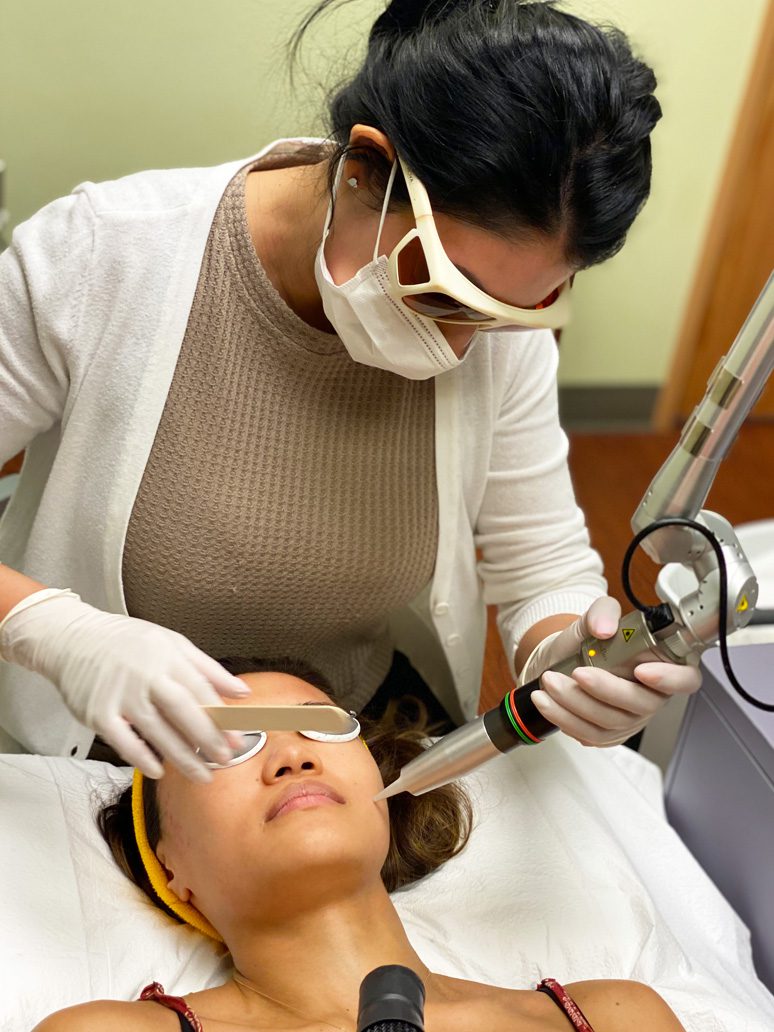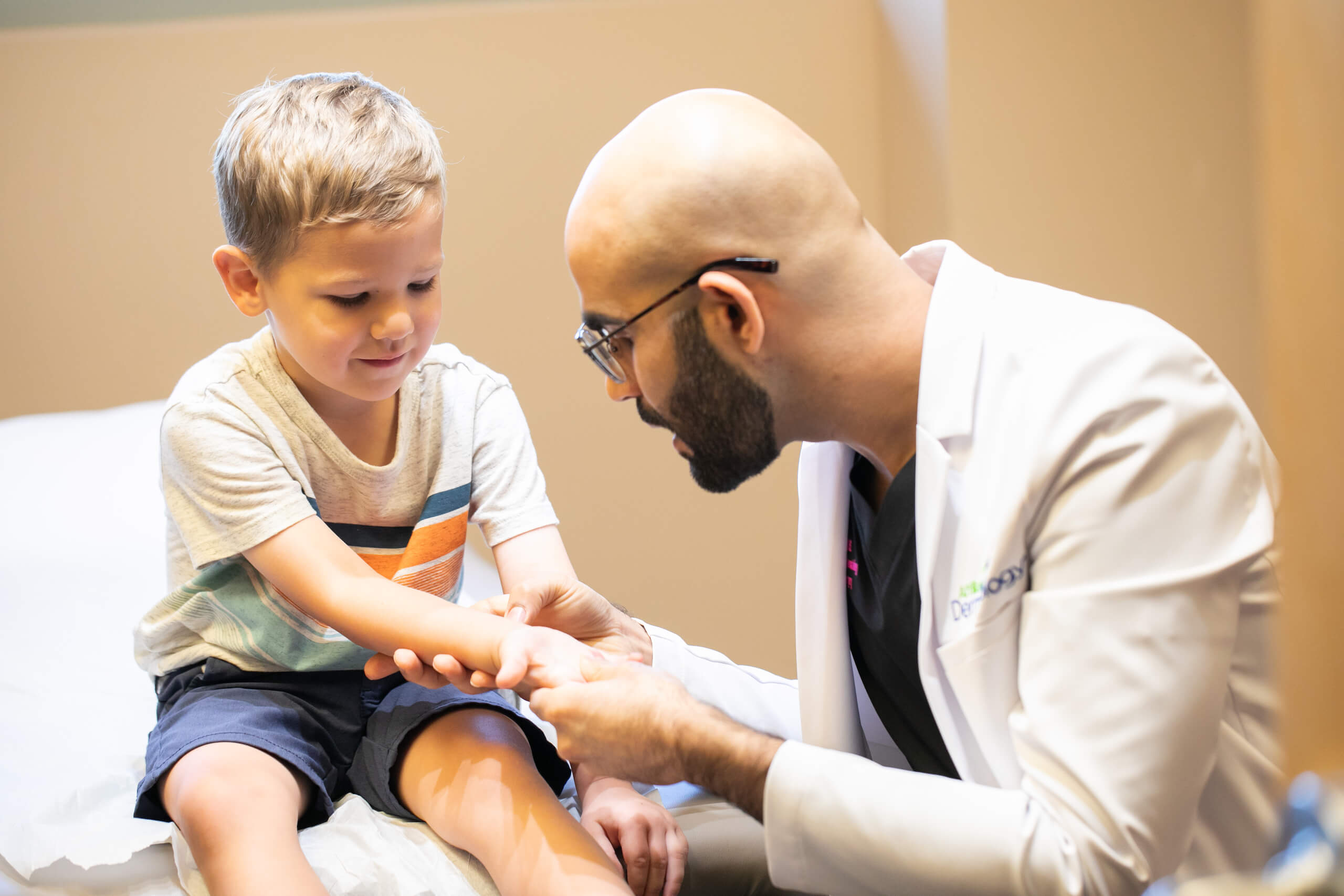Innovative Biologic Therapy for Psoriasis Raleigh NC: A New Era in Treatment
The Function of a Dermatologist in Detecting and Treating Different Skin Disorders
The duty of a skin doctor extends much beyond fundamental skin care; it encompasses the complex processes of diagnosing and treating a wide range of skin disorders. Via their specialized training, dermatologists utilize advanced analysis techniques to identify conditions such as eczema, psoriasis, and acne, tailoring treatment plans to meet specific client requirements. However, the intricacy of skin problems often needs a multifaceted method that consists of not only clinical treatments but additionally individual education and learning and preventative approaches. What implications does this extensive treatment have for individual end results and total skin health?
Significance of Dermatological Knowledge
The experience of skin specialists is essential in the diagnosis and monitoring of skin disorders, as they possess specialized expertise that prolongs beyond basic medical training. This advanced understanding is essential for properly recognizing a wide variety of skin disease, which often provide with overlapping symptoms that can perplex non-specialist professionals. Skin doctors are trained to separate in between different skin conditions, making sure suitable treatment plans are applied swiftly.
Moreover, the field of dermatology encompasses an one-of-a-kind mix of medical abilities and sophisticated technology. Skin doctors utilize sophisticated analysis tools, such as dermatoscopes and skin biopsies, to evaluate skin sores and identify their nature. This technical effectiveness enables very early discovery of potentially serious problems, consisting of skin cancers, which can significantly enhance client end results.

Common Skin Problems Identified
Various skin disorders can offer with varying degrees of extent and complexity, making dermatological proficiency vital for exact diagnosis and management. Amongst the most widespread problems are acne vulgaris, eczema, psoriasis, and dermatitis.
Acne vulgaris, characterized by the existence of pustules, comedones, and papules, primarily impacts teens however can continue into adulthood. Dermatitis, or atopic dermatitis, is a persistent inflammatory condition that results in dry, scratchy, and swollen skin. Psoriasis is an autoimmune disorder that materializes as red, flaky plaques, largely on extensor surfaces, and can substantially influence the quality of life.
Other typical problems consist of rosacea, which presents with facial flushing and visible blood vessels, and seborrheic dermatitis, commonly causing dandruff and oily spots on the scalp. Fungal infections, such as tinea pedis (athlete's foot) and tinea corporis (ringworm), are also regularly run into.
These varied conditions require an extensive understanding of pathophysiology, in addition to understanding of restorative choices, to assist reliable therapy strategies - Dermatologist Raleigh NC. Through accurate diagnosis, dermatologists can provide tailored management plans that address both the signs and symptoms and underlying reasons of these usual skin conditions
Analysis Methods Utilized
Just how do skin specialists accurately identify various skin problems? Skin specialists employ a mix of medical evaluations, analysis tools, and specialized methods to make sure accurate recognition of skin conditions.
Among the primary analysis techniques is dermoscopy, which makes use of a handheld device to multiply skin lesions, permitting for thorough evaluation of frameworks not visible to the naked eye. Additionally, skin biopsies are often performed, in which a tiny sample of skin is eliminated for histopathological analysis. This method is indispensable for detecting conditions such as cancer malignancy and various other skin cancers.
Patch testing is an additional vital approach employed to determine call dermatitis by exposing percentages of potential allergens to the skin. Moreover, research laboratory examinations, consisting of blood examinations and cultures, may be performed to rule out systemic problems or infections. Collectively, these diagnostic techniques enable skin doctors to create a thorough understanding of skin disorders, resulting in exact diagnoses and notified individual monitoring.

Therapy Options Offered
A wide range of treatment alternatives is readily available for managing skin conditions, customized to the details condition and individual client needs. Skin doctors employ both topical and systemic treatments, relying on the extent visit this web-site and kind of skin disorder. Topical treatments, such as corticosteroids, retinoids, and calcineurin inhibitors, are frequently suggested for problems like acne, psoriasis, and eczema. These agents target inflammation and promote skin healing.
For much more extreme conditions, systemic treatments may be required. These include oral medications such as antibiotics for microbial infections and immunosuppressants for autoimmune problems. Biologics, a more recent course of medications, have actually revealed efficacy in dealing with persistent inflammatory conditions like psoriasis and atopic dermatitis.
In enhancement to pharmacologic treatments, skin specialists Visit This Link may recommend step-by-step choices such as laser chemical, therapy, or phototherapy peels (Dermatologist Raleigh NC). These treatments can resolve pigmentation issues, acne scarring, and various other skin abnormalities successfully
Furthermore, lifestyle alterations, including proper skin care routines and sunlight security, play a vital role in the overall monitoring of skin conditions. By combining these therapy techniques, skin doctors intend to boost client outcomes and enhance lifestyle for those impacted by skin problem.
Patient Education and Support
Empowerment through knowledge is crucial in the administration of skin disorders, as patient education and learning and assistance substantially influence treatment end results. Skin doctors play an essential duty in offering people with detailed information regarding their problems, treatment choices, and self-care approaches. Effective communication cultivates a collective atmosphere where people can actively take part in their very own treatment.

Assistance extends beyond education and learning; it incorporates psychological reassurance and ongoing support. Skin doctors should develop a secure room for clients to reveal their problems and ask inquiries. Resources such as informational pamphlets, sites, and assistance teams can better empower clients, enabling them to get in touch with others facing similar challenges.
Ultimately, a knowledgeable individual is most likely to participate in their therapy trip, leading to better adherence, complete satisfaction, and enhanced health and wellness results. The skin doctor's duty in person education and support is essential to enhancing the administration of skin disorders.
Conclusion
In conclusion, skin specialists play a crucial duty in the reliable medical diagnosis and my response therapy of a wide array of skin problems. Their customized experience, combined with advanced diagnostic techniques and customized therapy plans, ensures thorough look after individuals. The focus on client education promotes proactive administration of skin health, encouraging individuals to take enlightened actions concerning their skincare programs. The contributions of skin specialists substantially enhance the top quality of life for those affected by skin disease.
The function of a dermatologist prolongs much beyond fundamental skin treatment; it encompasses the complex procedures of diagnosing and dealing with a vast array of skin problems. Dermatologists use innovative analysis devices, such as dermatoscopes and skin biopsies, to evaluate skin sores and establish their nature. Ultimately, the specialized training and experience of dermatologists are vital in giving extensive care for individuals with skin problems.
In addition, skin biopsies are regularly carried out, where a little example of skin is gotten rid of for histopathological evaluation. Jointly, these analysis methods allow dermatologists to formulate an extensive understanding of skin conditions, leading to precise diagnoses and notified person monitoring.